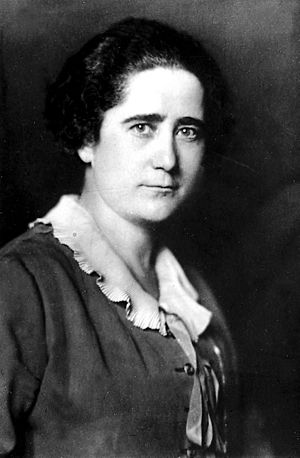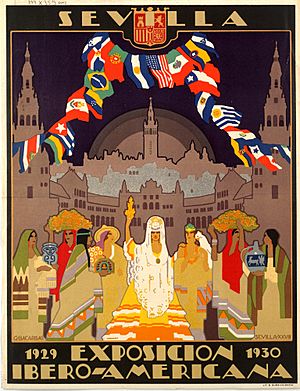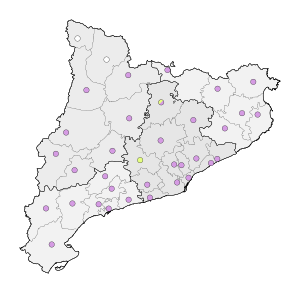Dictatorship of Primo de Rivera facts for kids
General Miguel Primo de Rivera took control of Spain in a military takeover on September 13, 1923. This happened during the time when King Alfonso XIII was the ruler. Primo de Rivera removed the existing government, which was led by Prime Minister Manuel García Prieto.
King Alfonso XIII and the army supported Primo de Rivera at first. His rule was called a dictatorship, meaning one person had all the power. During the first part of his rule (1923–1925), called the Military Directory, he created a political party called the Unión Patriótica (UP). He also controlled what the Spanish newspapers could say and tried to stop groups in Catalonia from wanting to be separate. Spain also won the Rif War against tribes in Morocco during this time.
In 1925, Primo de Rivera changed his government to the Civil Directory. He created the National Assembly, where different groups like businesses had a say. His government became friends with Italy and worked more with countries in Latin America. Spain also spent a lot of money building new roads and railways. Laws were also improved to help mothers who worked. More women started working in skilled jobs.
In 1929, Spain's economy faced problems, and the value of its money, the Spanish peseta, dropped. The army became unhappy with Primo de Rivera. Seeing this, the King stopped supporting him. Primo de Rivera resigned in 1930, ending his dictatorship. General Dámaso Berenguer took over. A year later, in 1931, Spain became a republic, which means it had a government chosen by the people, not a king.
Contents
Why the Coup Happened
After Spain lost its last colonies like the Philippines and Cuba to the United States in 1898, the country faced many problems. People were unhappy, and there was a lot of social trouble.
In 1921, Spain suffered another big defeat in the Battle of Annual against tribes in its Moroccan Protectorate. This made many Spaniards want big changes. The Spanish parliament was looking into who was responsible for the defeat.
Just before Primo de Rivera took power, the results of this investigation were about to be released. They showed that many high-ranking military officers were to blame. This made the relationship between politicians and the military even worse. The military felt that politicians were at fault. They decided to put a new government in place, and they chose Primo de Rivera to lead it.
The Takeover (1923)
On September 13, Primo de Rivera successfully took control in Barcelona. This kind of military takeover was common in the 1800s. With the army's help, he removed the government led by Marquis Manuel García Prieto.
Primo de Rivera said he would create a temporary government. He claimed it would save Spain from corrupt politicians who had been mismanaging the country. The next day, King Alfonso XIII supported Primo de Rivera's takeover. He removed the civilian government and stopped the 1876 Spanish constitution. The King made Primo de Rivera the head of a new Military Directory.
Many people in Spain supported the takeover at first. Even liberal newspapers like El Sol showed support. They believed Primo de Rivera would leave power in three months, as he had promised. The Catholic Church and most of the public also backed the new government. The stock market even went up, showing people had faith in the new system. Only small groups like the Communist party and Anarchist worker unions were against it.
The Military Directory (1923–1925)
What They Believed
The Military Directory was made up of eight generals and one admiral. They all reported to Primo de Rivera. He was the only one who could approve new rules and present them to the King. Primo de Rivera said his takeover was a patriotic act. He claimed it was needed to fix Spain's weak political system.
He saw himself as an "Iron Surgeon" who would "cure" Spain of corruption and social problems. Primo de Rivera often used religious ideas in his speeches. He worked with the Catholic Church to spread patriotic ideas across the country.
What They Did
Primo de Rivera closed all local governments to fight corruption. He replaced civilian officials with military ones. In April 1924, he created the Unión Patriótica (UP). This was the official party of his government. Its motto was: Nation, Church, and King. The party was meant to make his rule seem more legitimate and keep people supporting him.
Once in power, Primo de Rivera quickly made laws against separatism. This meant banning the teaching of the Catalan language, singing the Catalan national anthem, and showing the Catalan flag. His government also strictly controlled the press. They censored all newspapers, phones, and telegraphs. They also encouraged the media to promote patriotic ideas.
The Rif War
Early in his rule, Primo de Rivera promised to quickly end the Rif War. This war was against Riffian rebels who did not want Spain to control northern Morocco. At first, Primo de Rivera tried to make a deal with Abd el-Krim, the Riffian leader. He pulled out many Spanish soldiers from Morocco to save money.
However, some army officers wanted a stronger approach in Morocco. Also, the Riffian attacks grew worse in 1924. This made Primo de Rivera realize that continuing to withdraw soldiers could harm his government. In 1925, his government got help from France. After a successful military operation in Al Hoceima, Spain and France pushed back Abd-el-Krim's forces. They regained some control of the Spanish protectorate. After this victory, Primo de Rivera's government held celebrations across Spain. Primo de Rivera received a high military honor, the Gran Cruz Laureada de San Fernando.
The Civil Directory (1925–1930)
The New Government
In December 1925, Primo de Rivera's government changed from the Military Directory to the Civil Directory. During this time, he created the National Assembly. This assembly represented different groups like businesses, not individual voters. Groups like the UP, the Church, and the army were part of it.
Primo de Rivera also ordered military officials in government jobs to return to their army duties. Civilian governors replaced them. By creating the Civil Directory, Primo de Rivera showed he planned to rule for a long time. He was not going back to the old parliamentary system as he had promised in 1923.
Foreign Relationships
Primo de Rivera's government became friends with Fascist Italy. The press was not allowed to criticize Italy, and Primo de Rivera admired Italy's leader, Benito Mussolini. Primo de Rivera also wanted to improve Spain's ties with its former colonies in Latin America.
His government organized events like the 1929 Iberian-American Exhibition in Seville, inviting Latin American countries. Spain signed trade deals with Argentina and Cuba. It also set up radio-telegraph links with Uruguay and Brazil. After the Rif War, Primo de Rivera wanted Tangier to be part of the Spanish protectorate. But meetings with France, Italy, and Britain failed to achieve this. Spain only gained control of the city's police chief and better protection against arms trafficking. Primo de Rivera also tried to get Spain a permanent seat in the League of Nations in 1926 but failed.
Economic Plans
Primo de Rivera's government took control of Spain's economy. It limited free trade and closely watched all economic activities. In 1927, his government created CAMPSA, a Spanish oil company. It took over the facilities of private oil companies, including large foreign ones like Shell.
Primo de Rivera also raised tariffs on foreign goods. This meant foreign goods cost more in Spain. In 1927, the League of Nations called Spain the most protectionist country in the world. Spanish goods were promoted, and campaigns encouraged people to buy Spanish products. They criticized Spaniards who thought foreign goods were better.
Primo de Rivera's government spent a lot of money on public infrastructure. They improved roads, railways, and irrigation systems. They paid for these improvements by taking on a lot of debt. This led to a temporary increase in economic growth. The government had planned to pay for these changes with a progressive tax system, where richer people would pay more. But this plan was dropped after the wealthy resisted it.
In 1929, Spain's economy faced problems, which happened at the start of the Great Depression. People lost faith in Primo de Rivera's government. The government also struggled to keep the value of Spain's money, the Spanish peseta, stable. No economic policy could stop the peseta from losing value.
Social Changes

In 1924, Primo de Rivera's government gave unmarried women the right to vote in local elections. They had to be over 23 and not under their parents' control. Women could also run for office in town councils. In 1927, fourteen women were invited to be part of the National Assembly.
However, Primo de Rivera believed that women's main role was in the home. His government encouraged large families. In 1926, it started giving money to families with more than eight children. The government also protected the rights of individual workers with its 1926 labour code. It introduced benefits for mothers and allowed nursing mothers a paid hour each day to feed their babies.
In November 1926, the government created the National Corporative Association. Here, committees representing trade and industry met with equal numbers of employers and employee representatives. They discussed legislation and tried to solve problems between workers and bosses. The number of women working in skilled jobs also increased quickly from 1925 to 1930. The percentage of women in training programs also rose.
The End of the Dictatorship (1930)
The economic problems of 1929 and the government's failure to stabilize the peseta hurt its reputation. However, the main reason for the collapse was political. Primo de Rivera failed to create a lasting and accepted form of government. The 1876 constitution was suspended when he took power. The new constitution created by the National Assembly was rejected by those who supported the King, those who wanted more freedom, and those who wanted a republic.
The army also had complaints about Primo de Rivera. These complaints mainly came from the artillery corps, whom Primo de Rivera had suspended in 1926. As the King saw Primo de Rivera losing support among the army, he could no longer back the dictatorship. Primo de Rivera resigned on January 28, 1930, ending his rule.
What Happened Next
After Primo de Rivera resigned, the King appointed General Damaso Berenguer as the new Prime Minister. Berenguer planned to bring back the parliamentary monarchy that existed before Primo de Rivera's rule. But this plan was opposed by those who wanted a republic, socialists, and people like Niceto Alcalá-Zamora. They no longer supported King Alfonso XIII or the monarchy.
In Spain's next elections in 1931, groups who wanted a republic (including communists and socialists) won most of the city council seats in major cities. These results showed that the public no longer supported King Alfonso XIII. He resigned after the election. Spain's Second Republic was then established on April 14 or 15, 1931.
See also
 In Spanish: Dictadura de Primo de Rivera para niños
In Spanish: Dictadura de Primo de Rivera para niños
- European interwar dictatorships
- Restoration (Spain)
- Military directory of Primo de Rivera





